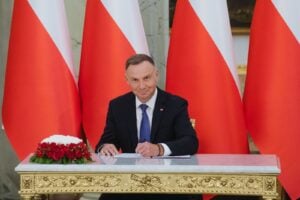Energy imbalance: why it will be difficult for Ukrainians to pay off their electricity debts
14 August 13:27
The government wants to make life a little more difficult for companies that have debts for electricity. But not for everyone. "Komersant Ukrainian" found out who should be worried first.
Improving consumers’ payment discipline was the goal of the National Energy and Utilities Regulatory Commission (NEURC) when updating the Rules of the Retail Electricity Market. However, it was not without its reservations.
Who has a reason to worry
Even at the stage of preparation, the NEURC’s decision was the subject of critical attention. For example, the Association of Ukrainian Cities in its appeal to the regulator defended water utilities, emphasizing that a possible interruption of electricity supply would lead to a restriction or termination of water supply and sewerage services, which would be felt by consumers in the first place. The Association proposed not to adopt the draft resolution at all. Oleksandr Slobozhan, Executive Director of the Association of Ukrainian Cities, argued in favor of such a proposal at the NEURC meeting, but the relevant draft was approved. Although the decision has not been finalized, Oleksandr Slobozhan continues.
“Since this document is a draft regulatory act, its final adoption is preceded by an open discussion procedure. Therefore, it is posted on the NEURC website and comments and suggestions to it are being collected until August 17, after which it will be submitted to the NEURC for final approval. The Association of Ukrainian Cities calls on both local governments and water utilities to actively submit proposals to the draft resolution,” emphasized Oleksandr Slobozhan.
He also said that the Association of Ukrainian Cities has already prepared proposals to improve this draft.
What is changing in the rules of the retail electricity market?
When updating the rules, the regulator focused on preventing abuses by non-household consumers who have debts for electricity supply and use judicial mechanisms to unreasonably preserve electricity supply. Oleksandr Kharchenko, Director of the Center for Energy Research, explains who exactly can feel the changes.
“There is a certain number, very small in fact in relation to the total number of debts, of companies that are commercial and are trying to come up with something to avoid paying for electricity. Indeed, there are cases when a company has filed a lawsuit, and the court has banned them from being disconnected. Then the court case lasts for 3 years. They don’t pay all this time, the judge postpones the hearing, postpones it, and so on. There are such cases, but they do not constitute any critical mass. Accordingly, all these decisions have no impact on the actual total debt,” the expert notes.
And yet. According to the updated rules, the existence of a court decision to initiate proceedings in a case is not a ground for suspending the procedure for disconnecting power supply to a non-household consumer’s facility. It will be possible to prohibit the electricity supplier from terminating electricity supply only by a court ruling directly prohibiting the termination of electricity supply.
The innovations do not apply to household consumers
The National Commission for State Regulation of Energy and Public Utilities explained that the amendments to the Rules of the Retail Electricity Market do not apply to the termination of power supply for protected consumers and consumers whose facilities are defined as critical infrastructure. These are, in particular, healthcare facilities, heat and water supply companies and water utilities, defense and security facilities, etc. Oleksandr Kharchenko elaborates on this.
“A very large part of all debts on the market are debts of enterprises that cannot be disconnected. For example, mines are big debtors, especially closed mines, because any closed mine continues to use a lot of electricity to pump out water to prevent an environmental disaster. And for the most part, the state does not pay for this. Water utilities are big debtors. They consume a huge amount of electricity, which is simply not included in their tariff in line with the market price, and they have no source of money to pay in principle. District heating companies are also significant debtors. Accordingly, 90% of companies are not subject to these changes. It is simply forbidden to disconnect them. And no resolution of the NEURC means anything,” the expert states.
That is, the solution to the debt problem is postponed. What cannot be said about the debts themselves is that they are growing.
The debt story continues
The largest debtors for electricity consumption and distribution are water and sewerage companies. As of June 1 of this year, the debt of water supply and sewerage companies for electricity and its distribution reached UAH 12.5 billion. The debt structure is as follows: uAH 11.4 billion (91.0%) for electricity consumed; UAH 1.1 billion (9.0%) for distribution services. These data are provided by the DiXi Group Analytical Center. Between March and May 2025, the debt increased by 5.5% – from UAH 11.8 billion in February.
Most of the debt of water utilities for electricity is concentrated in two eastern frontline regions. In Donetsk region, the debt amounts to UAH 5 billion, which corresponds to 44.2% of the total national figure, and in Kharkiv region – UAH 4.5 billion, or 39.8%. Vodokanals from the remaining 22 regions have a total debt of UAH 1.8 billion, which is 16% of the total amount. The smallest non-payment among water utilities was recorded in the capital – only UAH 7.4 million, or 0.1%.
The reasons for the debt growth are known: “frozen” tariffs for water supply and sewerage services for household consumers and the state’s debt to compensate for the difference in tariffs. Oleksandr Slobozhan, Executive Director of the Association of Ukrainian Cities, continues .
“Electricity, which is the main component of the tariff for water supply and sewerage services, has tripled in price since 2021. And the tariffs of water utilities – licensees of the NEURC – have not changed since 2022. This has led to the total debt of water utilities to electricity suppliers amounting to more than UAH 11 billion. The state has also not reimbursed UAH 2.5 billion of the difference in tariffs that has accumulated in previous years. Under these conditions, especially on or near the contact line (for example, in Kharkiv), water utilities are constantly using their own resources to repair and restore networks and equipment damaged by drone, missile and bomb attacks,” emphasizes Slobozhan.
According to him, this state of affairs leads to the fact that water utilities cannot pay for the consumed electricity in a timely manner and in full.
What to do with debts
The recipes for solving the debt problem are known. They have been tested many times. But not yet in Ukraine. The main issue is the willingness to do it. This is the opinion of Oleksandr Kharchenko, Director of the Energy Research Center.
“I do not see the current government’s desire to do this. What exactly to do? This is a fairly clear set of actions. This includes the abolition of special obligations for state-owned companies. This includes bringing tariffs to the level of market prices. This includes changing approaches to subsidizing citizens. The right thing to do would be to provide targeted subsidies to those who really need them. Otherwise, the owners of two- or three-storey cottages pay the same electricity tariff as people living in a two-room Khrushchev apartment. This is a big comprehensive reform. It has been developed. For example, Moldova carried out such a reform in 2022 and everything is working fine, no one is dying from the cold and lack of electricity, and they even re-elected the president who actually initiated and carried out this reform. In our country, all this is postponed. But the situation is really very difficult,” the expert emphasizes.
What will happen next with electricity tariffs and debts
During martial law in Ukraine and for six months after its end, we should not expect any increase in tariffs for thermal energy (its production, transportation and supply), heat supply services and hot water supply for all categories of consumers – a moratorium is in place.
Although in a few months there will be another opportunity to revise electricity tariffs for households. In April, the government extended the provision on the imposition of special obligations (PSO) on electricity market participants, stipulating that until the end of October 2025, citizens will continue to pay for electricity at the same tariff of UAH 4.32 per kWh. Will this tariff be revised? Oleksandr Kharchenko’s point of view.
“My forecast is that there will be a government decision that will prolong the current conditions. Although the IMF is paying attention to this topic and has already started a discussion on how this reform should look like in time and space. In general, this reform is in any case very conceptual and extensive. And it will definitely take 2-2.5 years. It requires time, a large number of regulatory decisions, the formation of a citizen support fund, the formation of an appropriate citizen support base, etc. That is, a large number of changes in regulatory documents. So far, we have not started to move in this direction,” emphasizes Oleksandr Kharchenko.
However, the documents agreed with the IMF this summer set out the guidelines for the authorities – both in terms of overcoming the debt problem and changes in tariffs. The eighth review of the IMF’s Extended Fund Facility program has already recorded the commitment of the Ukrainian authorities to start working on an energy roadmap.
The authorities, in particular, intend to adopt a roadmap for the gradual liberalization of the gas and electricity markets within six months after the end of martial law with a clearly defined timeframe for implementation. The roadmap will cover PSO reforms, plans for gradual tariff increases and tariff setting methodologies, mechanisms to address the problem of inherited debt and arrears in the energy system by various energy players, and a comprehensive scheme to protect the most vulnerable households.
Author: Sergiy Vasilevich









